Top Story
Historic Preservation Consultant Judy Williams’s Top Ten Historic Buildings in Central Ohio
Columbus-based consultant Judy Williams has 30+ years of experience in historic preservation and has successfully guided over 150 historic structures across the country through the Historic Tax Credit certification and approval process. She works closely with owners, developers and architects in design development and coordination of tax credit applications. Williams also has documented large numbers of historic properties, nominated structures and districts to the National Register of Historic Places, prepared historic design guidelines and written local preservation plans. She recently shared her top ten favorite historic structures with ULI Columbus.
The Hayden Building (1869)
20 E. Broad Street
A gem of a 19th century building in downtown Columbus, the Hayden was built by industrialist Peter Hayden who located a wholesale saddlery and harness business there, and, eventually, the Hayden National Bank. The High Victorian Italianate sandstone façade, which is relatively unique in Columbus, was designed by Nathan Kelley, one of the architects of the Ohio Statehouse across the street.
New Hayden Building (1901)
16 E. Broad Street
The Hayden’s neighbor is the 13-story New Hayden Building, built by Peter Hayden’s estate in 1901. An early Columbus skyscraper, this Chicago style building housed celebrated Columbus architect Frank Packard’s penthouse office (although he did not design the building). This building gained national prominence as the first official offices of the National Football League.
The Atlas Building (1905)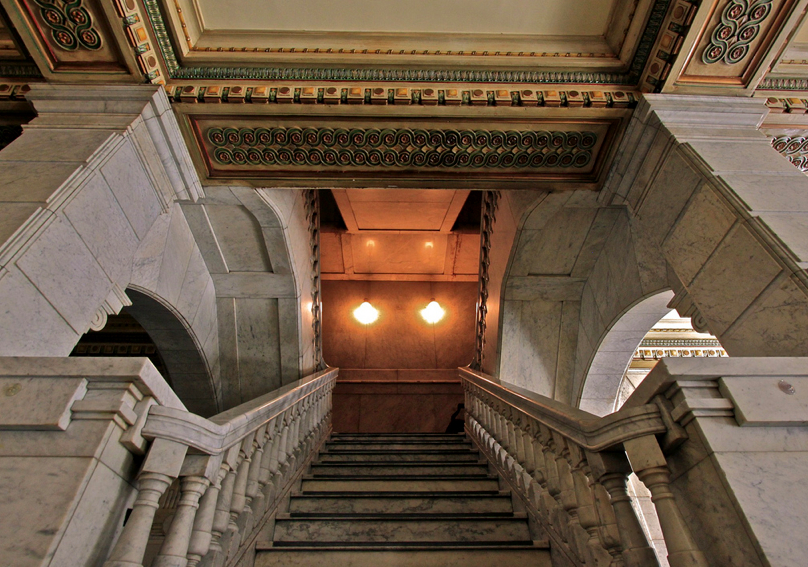
8 East Long Street
The Atlas Building lives up to its name, presenting an image of strength with its heavy brown terra cotta columns, shaft of brown brick and ornate buff terra cotta cornices. Designed by Columbus architect Frank Packard, it was originally built as a bank and offices for Columbus Savings and Trust Company. Today, the original office lobby, which is encased in white marble including a grand marble stair, welcomes residents of 98 upscale apartments. Photo Credit: Eric Lipschutz
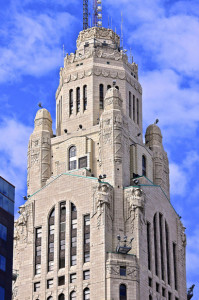 The LeVeque Tower (1927)
The LeVeque Tower (1927)
50 West Broad Street
The iconic 47-story, art deco-style LeVeque Tower was said to be the tallest building between New York and Chicago and the fifth tallest building in the world at the time it was built. At 555 feet and six inches tall, it was constructed to be exactly one half-foot taller than the Washington Monument. The building defined the Columbus skyline until 1974, when the Rhodes Tower was built. Photo Credit: Eric Lipschutz
Old Port Columbus Terminal and Hangar (1929)
Charles Lindbergh selected Columbus as the first westbound transfer point for passengers traveling from New York to California on the first Transcontinental Air Transport (the forerunner to TWA) line in 1929. At the time, cross-country train travel took 96 hours. Combining it with air travel cut the time to 48 hours. The terminal served Port Columbus until 1958. Plans for the rehabilitation of the terminal and hangar are in the works.
Berry Brothers Bolt Works (1888)
Placed on the National Register of Historic Places as a classic industrial structure from the late 19th-century with much of its original architecture and machinery still intact, the Berry Brothers Bolt Factory was a nut and bolt manufacturing facility built to supply the Jeffrey Mining and Manufacturing Company, buggy manufacturers and machine shops around Columbus. Renovated for office use, the building retains its architectural integrity inside and out.
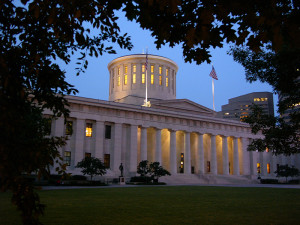 Ohio Statehouse (1839-1861)
Ohio Statehouse (1839-1861)
A crown jewel in downtown Columbus, the Ohio Statehouse is quintessential Greek Revival architecture and one of the country’s most admired statehouses. Built between 1839 and 1861, the stately structure is topped by a two-story drum with a low conical roof instead of the typical domes utilized in similar buildings. Eventually cut up into 300 separate rooms, it was restored to its former grandeur in 1990-1996. Photo Credit: Chris Kasson
The Dam Tender’s House (1816)
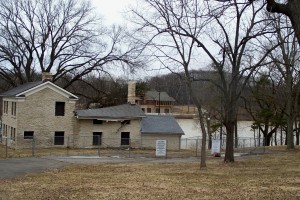 One of the oldest limestone structures in Ohio, this building was originally built in 1816 for Ebeneezer and Lois Richards. Located along the Scioto River near Upper Arlington, the house began a second life as the Dam Tender’s house following the city’s creation of Griggs Dam in 1904-1905. In recent years, interest in preserving the building resulted in its stabilization and it is now scheduled to be renovated and turned into an event venue by the City of Columbus. Photo Credit: Columbus Landmarks Volunteer Photography Group
One of the oldest limestone structures in Ohio, this building was originally built in 1816 for Ebeneezer and Lois Richards. Located along the Scioto River near Upper Arlington, the house began a second life as the Dam Tender’s house following the city’s creation of Griggs Dam in 1904-1905. In recent years, interest in preserving the building resulted in its stabilization and it is now scheduled to be renovated and turned into an event venue by the City of Columbus. Photo Credit: Columbus Landmarks Volunteer Photography Group
Franklin Park Conservatory (1895)
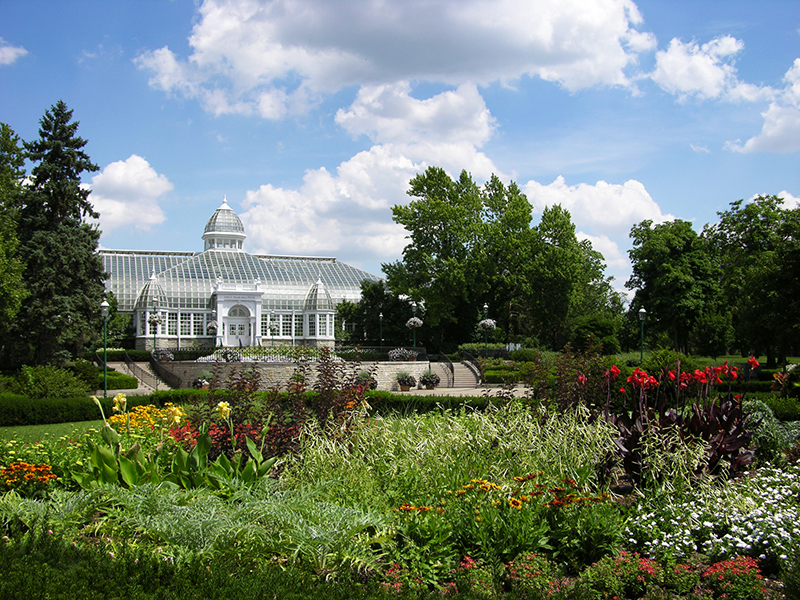
Located on 88 acres that served as the former site of the Franklin County Fair and the Ohio State Fair, the Franklin Park Conservatory opened to the public in 1895. Drawing inspiration from the Chicago World’s Fair and Columbian Exposition of 1893, the building features a grand Victorian-style glass greenhouse known as the Palm House today, a beautiful venue for weddings and special events. Photo Credit: Courtesy of Franklin Park Conservatory
The Drexel Theater (1937)
Built in the 1930s, the Art Deco designed Drexel Theater in Bexley opened on Christmas Day with showings of “One Mile from Heaven” on its single screen theater. It was expanded to a triplex in the ‘90s. Today, it remains a Main Street landmark and retains much of its original Art Deco style décor and its red and blue neon marquee. It was recently listed on the National Register of Historic Places.
Thank you to Columbus Landmarks Foundation and Brand Columbus for the use of the photography featured in this post.
Edited by:
Cheryl Pentella
ULI Columbus Communications Committee Chair
Principal at Pentella Unlimited
